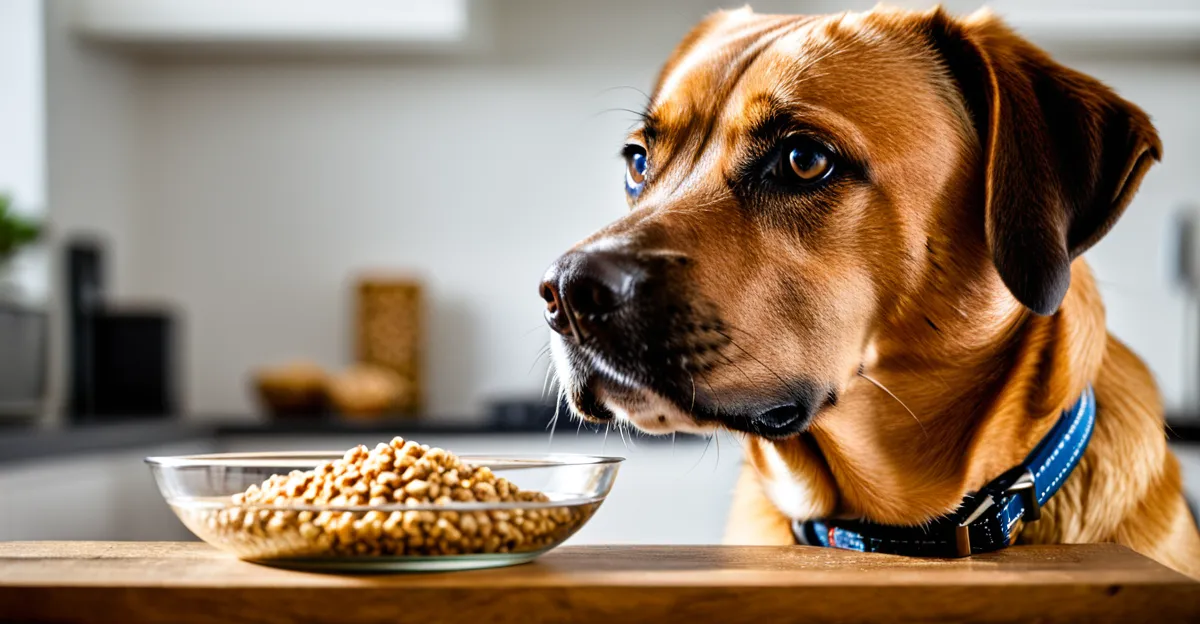Understanding Current Pet Nutrition Trends in the UK
The pet nutrition trends UK landscape is evolving rapidly, reflecting heightened awareness among pet owners about health and wellbeing. In recent years, there’s been a notable shift towards diets emphasizing natural, high-quality ingredients and tailored nutrition. This includes an expanding interest in grain-free options, raw feeding, and plant-based formulas aimed at addressing allergies, sensitivities, and environmental concerns.
Among the popular UK pet diets, raw and freeze-dried foods stand out for their perceived benefits in supporting digestion and coat condition. Additionally, limited-ingredient diets are gaining traction, helping owners manage food intolerances more effectively. The rise of sustainable sourcing has also prompted greater demand for insect protein and responsibly harvested fish, aligning modern pet nutrition UK values with global environmental considerations.
Also to see : Which Unique Pet Experiences Can You Discover Across the UK?
Several UK brands are at the forefront of innovation by integrating superfoods, probiotics, and novel proteins into their recipes. These modern pet food UK offerings combine palatability with scientifically-backed nutrition, responding directly to consumer preferences for transparency and ingredient integrity. By catering to specific life stages, breed sizes, and health conditions, these diets showcase how personalization is becoming a core aspect of the pet food market.
Understanding these evolving trends provides UK pet owners with the context needed to make well-informed diet choices, balancing nutritional benefits with personal values and pet needs.
Also to discover : How can UK pet owners prepare for natural disasters?
Evaluating Pros and Cons of Pet Nutrition Trends
Understanding the benefits of pet food trends in the UK is essential for making informed decisions. Many emerging diets, such as grain-free, raw, and plant-based options, offer specific health advantages. For example, grain-free diets can help reduce allergies and digestive issues in sensitive pets, while raw feeding promises improved coat condition and natural nutrient absorption. Moreover, plant-based formulas respond to ethical concerns and environmental sustainability, appealing to conscious consumers.
However, there are notable drawbacks of new pet diets. Raw diets, despite their appeal, carry a higher risk of bacterial contamination and nutritional imbalance if not carefully formulated. Similarly, novel proteins like insect-based ingredients require scrutiny regarding allergenicity and long-term effects. In the UK context, pet owners must be cautious about ingredient quality and sourcing, ensuring products meet safety standards and nutritional completeness.
When considering pet diet pros and cons UK, traditional diets often provide consistent, regulated nutrition, while modern pet food UK options bring innovation and customization but can vary widely in quality. Consumers should weigh the potential health benefits against these risks, considering their pet’s specific needs and consulting professionals before a diet change. Ultimately, staying informed about ingredient transparency and scientific backing is key to navigating the evolving UK pet nutrition trends effectively.
Expert and Veterinary Perspectives on Pet Nutrition
Understanding UK vet recommendations is crucial for navigating the evolving landscape of pet nutrition trends UK. Veterinarians emphasize the importance of basing pet diet decisions on scientific evidence rather than marketing claims. When asked about the reliability of modern pet food UK innovations, experts highlight that diets should fulfill all nutritional requirements tailored to the individual pet’s age, breed, and health status. This means that while new trending diets like grain-free or insect-based proteins can offer benefits, they must be carefully evaluated for safety and effectiveness.
Expert opinions on pet nutrition consistently advocate consulting qualified professionals before switching diets. For example, vets often recommend gradual diet transitions to monitor tolerance and avoid gastrointestinal upset. They also stress the value of complete and balanced commercial diets, which undergo rigorous testing and meet UK pet food regulations. When pet owners question the credibility of raw feeding or plant-based diets, experts suggest ensuring these approaches comply with established nutritional standards and are supported by veterinary guidance.
Addressing pet diet guidance UK, misinformation remains a barrier. Misinformed trends may exaggerate benefits or overlook potential downsides. To counter this, UK veterinarians encourage owners to seek advice from trusted sources and rely on evidence-based resources rather than anecdotal reports. They promote transparency in ingredient sourcing and labelling to help owners make informed choices aligned with their pet’s health needs. Ultimately, integrating expert advice helps balance the appeal of innovative pet nutrition UK options with practical, safe feeding practices.
Navigating Regulations and Labeling in the UK Pet Food Market
Navigating the UK pet food regulations is essential for pet owners striving to understand the safety and quality of available products. The UK enforces strict guidelines that govern pet food manufacturing, ingredient sourcing, and marketing claims. These regulations aim to protect pets from harmful substances and ensure nutritional adequacy across all modern pet food UK options. The Department for Environment, Food & Rural Affairs (DEFRA) plays a key role through the DEFRA pet guidelines that manufacturers must follow.
Understanding pet food labeling UK can help owners make informed selections. Labels must clearly display ingredient lists, nutritional content, and any additives used, providing transparency and compliance assurance. A correctly labeled product should reveal whether it meets recognized feeding standards, like those from the Association of American Feed Control Officials (AAFCO) or equivalent UK guidelines, helping pet owners evaluate popular UK pet diets effectively.
Compliance with government and industry standards also means that labels must not mislead consumers with unsubstantiated health claims or ambiguous terminology. This protection empowers owners to compare product offerings accurately and aligns with the broader pet nutrition trends UK focused on ingredient integrity and safety. By consulting labels alongside regulatory information, UK pet owners gain confidence in selecting diets that suit their pets’ health needs while adhering to legally defined quality metrics.
Making Informed Choices and Practical Steps for UK Pet Owners
Choosing pet food UK requires a thoughtful approach balancing emerging trends with individual pet needs. To evaluate pet diets effectively, owners should first consider their pet’s age, breed, health status, and preferences. This personalized assessment ensures alignment with the latest pet nutrition trends UK while safeguarding wellbeing.
When assessing new products, it’s crucial to ask targeted questions like: Are the ingredients clearly listed and sourced responsibly? Does the food adhere to UK pet food regulations? How is nutritional completeness verified? Understanding these factors helps differentiate quality modern pet food UK options from less reliable alternatives.
Practical pet nutrition advice UK emphasizes gradual diet transitions to monitor tolerance and avoid digestive upset. Owners should also observe their pets for changes in energy, coat condition, or stool quality after switching foods. Moreover, consulting veterinarians or certified pet nutritionists aligns choices with expert opinions pet nutrition often highlighted in UK vet recommendations.
To maintain informed decisions, UK pet owners are encouraged to utilize trustworthy resources such as veterinary guidance, scientific literature, and industry standards. This ongoing engagement supports better evaluation of popular UK pet diets and the benefits of pet food trends, ensuring pets receive safe and balanced nutrition without falling prey to marketing hype or misinformation.








